Crowley braves dock-eating seas and late-season storms to fuel Arctic military station
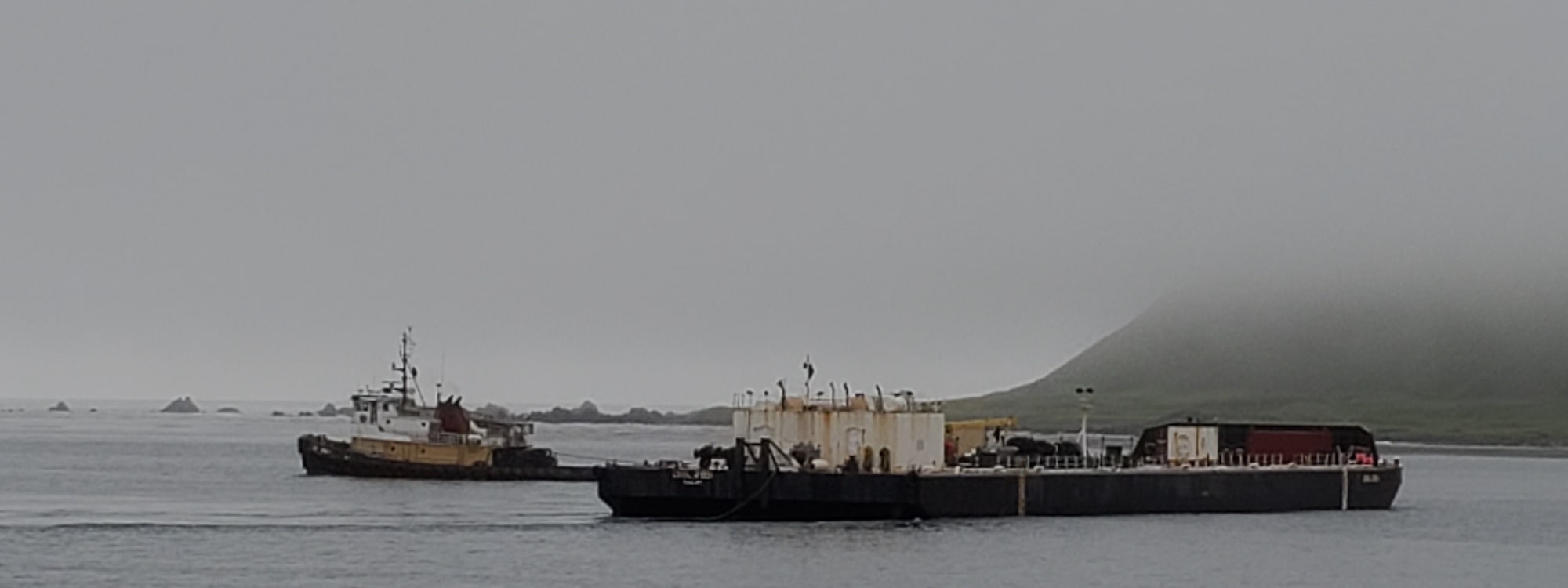
Crowley Solutions – Fuel Over The Shore
Crowley braves dock-eating seas and late-season storms to fuel Arctic military station
Latest edition of 64-year mission promises to be one for history books.
Crowley’s fueling mission to the U.S. Air Force’s Eareckson Air Station on the Aleutian Island of Shemya dates back to after WWII through the Cold War, when Shemya played an essential role in the Distant Early Warning (DEW) Line and COBRA DANE radar installation.
Times change, but Shemya’s strategic value and the legendary severity of the weather in the region remain. Despite the challenges, Crowley soldiers on, delivering essential fuel to the island twice a year, year after year.
On the eve of 2020’s final jaunt to the island, Anthony Morris, the team leader and Cargo Operations Manager of Crowley Fuels reflected, “The dock in Shemya has always been very, very difficult to get to because it’s a rock in between the Bering Sea and the Pacific Ocean. It’s almost always turbulent out there, and it’s not uncommon for 28-foot seas to engulf the dock.”
This year’s operation was unusually difficult thanks to a winter storm that destroyed the same dock which has been in use since the 90s. The damage delayed operations, which usually occur in spring, pushing the delivery outside the optimal weather window. As a result, Morris’s team moved twice the amount of fuel in twice as many lighterings—racing to finish before the storm season.
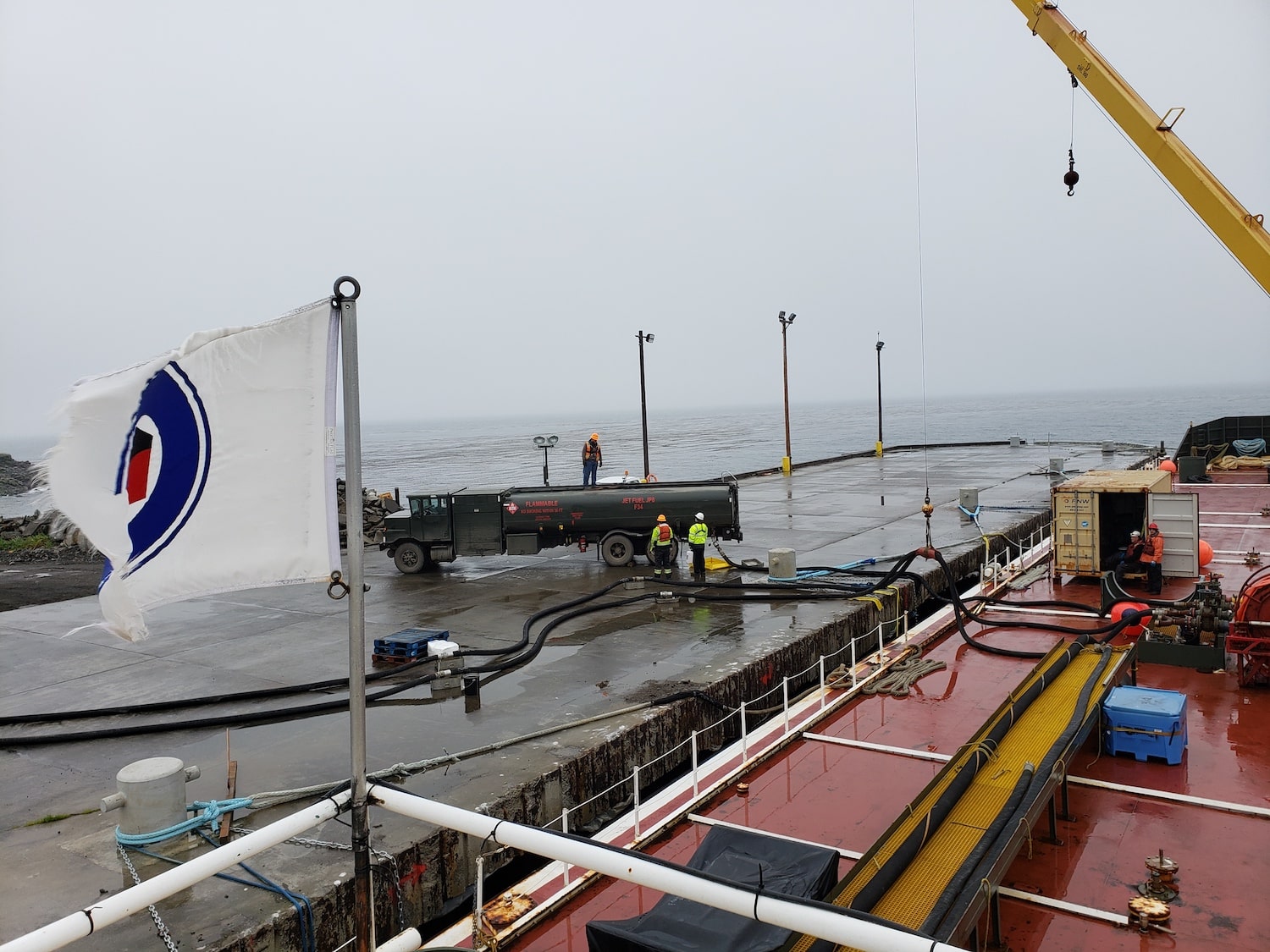
It Takes a Crowley
Shemya is one of several military bases Crowley supplies in addition to over 100 villages throughout Western Alaska. For Shemya, and hundreds of other outposts, Crowley is the sole fuel supplier. These recipients rely on Crowley’s equipment and fuel-over-the-shore expertise for the fuel they survive on, and that military operations hinge upon.
Shemya is both a perfect example of Crowley’s commitment, and an extreme case. The combined efforts of Crowley’s fuel and government solutions groups over the past decades have established committed supply schedules and well-oiled operations, enabling entities through the Alaskan frontier to thrive.
Rare Skills Required
Since 1956, the Shemya run has been performed in roughly the same manner: Towed barges laden with fuel sourced over 1,200 miles away are pumped into dockside tanks.
The hardest part is maneuvering the line haul barges—an operation that is difficult even in the best conditions. “Being on the ocean, it’s very much a contact sport. It’s a very active ground out there,” Morris explained. “A three to four-foot swell doesn’t sound like a lot—except when you’ve got 120-foot tugs going alongside of a barge and they’re both going up and down at different rates and pounding against each other.”
Crowley’s team is comprised of Morris, based onshore at Shemya, and a vessel crew with experience, gained from multiple Shemya missions, aboard Crowley’s tug. Monitoring the weather constantly, they wait for the right sea conditions and wind direction to make perfectly-timed approach to the dock. Sometimes that can mean waiting 30 to 40 days, according to Morris. “The wind never stops. It just has to be coming from the right direction for us to do our job. That’s the key there. The hard part is just having the patience because everyone out there wants to get the job done,” he says.
Even when they have a suitable window and things appear to be going well, they’re constantly watching out for sudden weather fronts. “We tie up to the dock with lines that we can actually put an axe to if we need to cut loose and get out of there in a hurry,” said Morris. “Because, if the weather does pick up, it’s a bad place to be.”
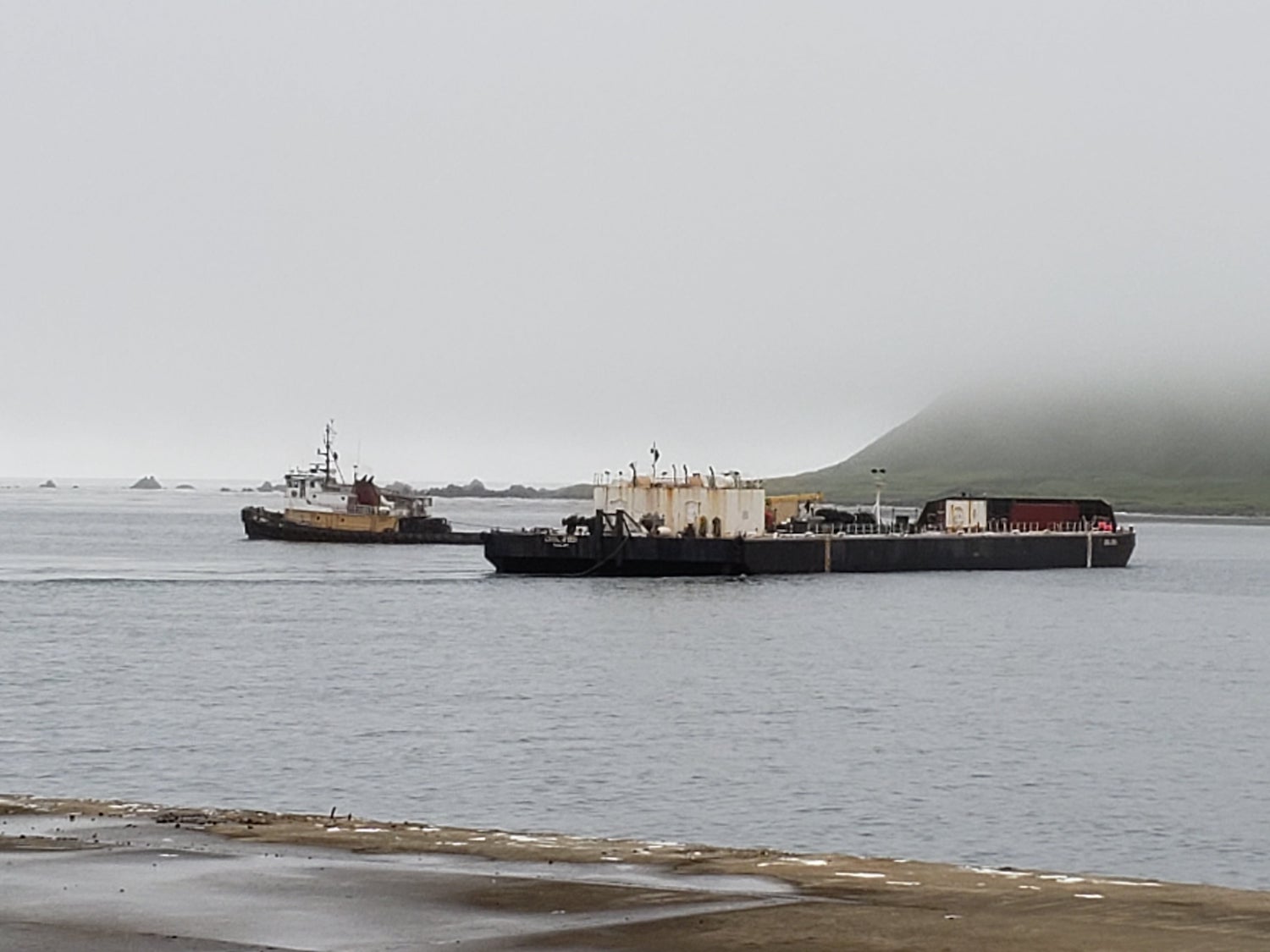
Crowley has other options for bringing in fuel – over the shore or through the air, but none is more effective based on Shemya’s infrastructure and location. In the past, Crowley has considered coming in over the beach. It is a method used in many of the villages Crowley serves. However, the time it takes to engineer a beach landing—10 to 12 hours in some cases—makes it impractical; not to mention the potential presence of unexploded ordinance in the shallow harbor, dating back to Eareckson Air Station’s role in WWII.
Despite the degree of difficulty of the mission, Crowley has a near-perfect record delivering fuel to Shemya. “That’s one of the things about Crowley: it’s that we really don’t know how to fail. We’re going to get the job done,” Morris stated.
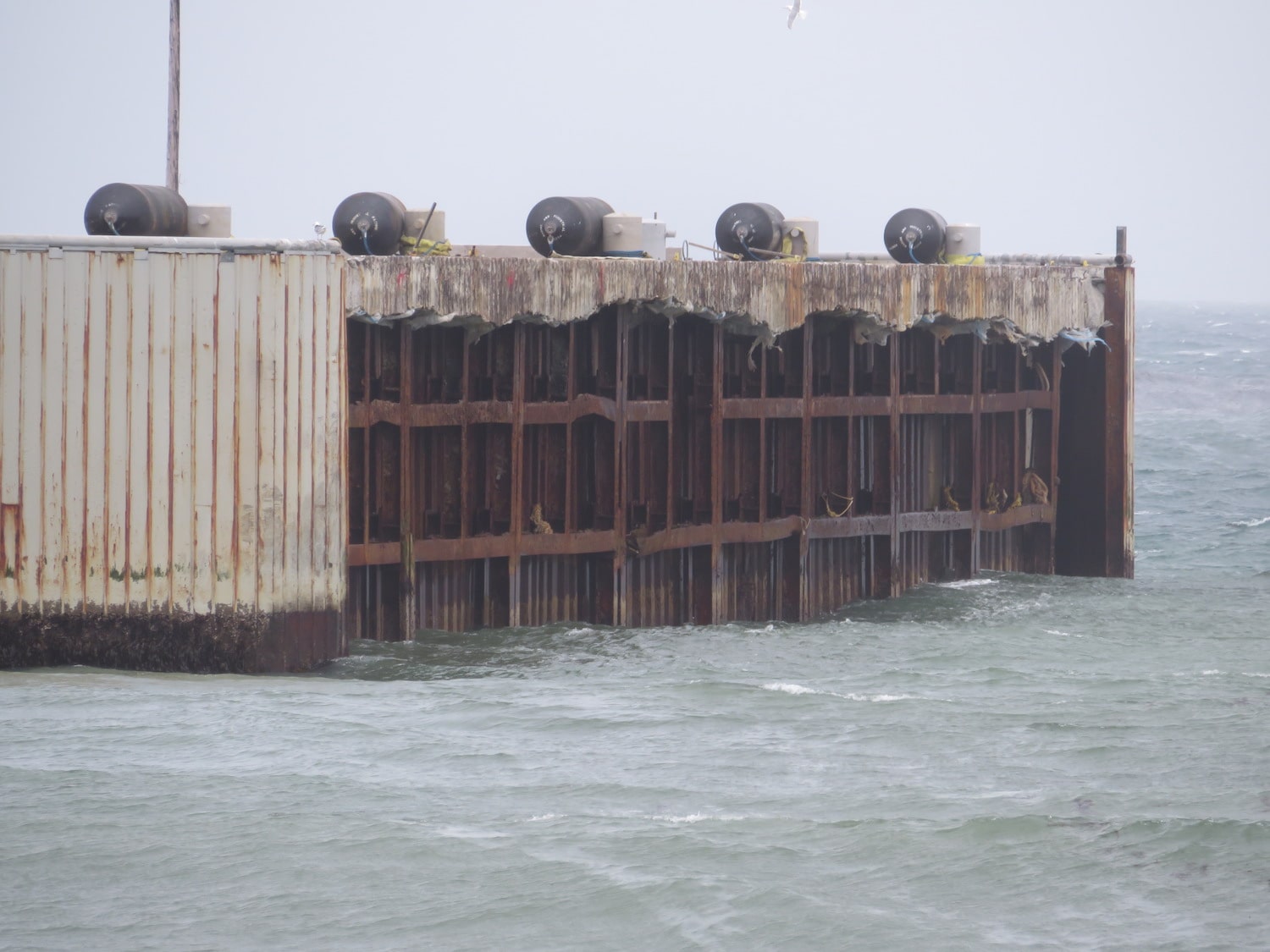
2020: A Year Like No Other Year
Due to the damage to the dock caused by the early year storms, delays pushed this year’s operation past the optimal weather window and also necessitated that more fuel be delivered to make up for time. As a result, Crowley planned to deliver twice the fuel—3.5 million gallons in all—via an offshore ship-to-ship transfer resulting in two lightering deliveries over the shore of roughly 1.7 million gallons each.
Damage to the dock during the storm last winter also created an unusual set of variables. “It’s a very rough dock base now where there’s metal beams and a concrete overhang,” Morris observed. “We can’t be putting holes in anything, so we’ll just use large Yokohama fenders and have larger ones on board if what they have is inadequate. We’re hedging our bet any way that we can.”

Crowley considered anchoring off the dock this year. However, this option was quickly squelched when the military warned of unexploded ordinance and the inherent dangers of dropping anchor in the bay.
“There’s no way we want to touch the bottom if we can help it,” Morris says. “In an emergency, we might drop something. But short of that, we need to be able to get to the dock right now and we deem that we can do it.”
Despite the unprecedented circumstances, Morris and the team stuck to a simple script. “The timing in meshing of all the vessels is key. A lot of logistics were involved. Secondly, getting out there and having a weather window to do the job. And thirdly, having the experienced crew to get the job done efficiently when we do get the opportunity to do it. We can’t waste any motions.”
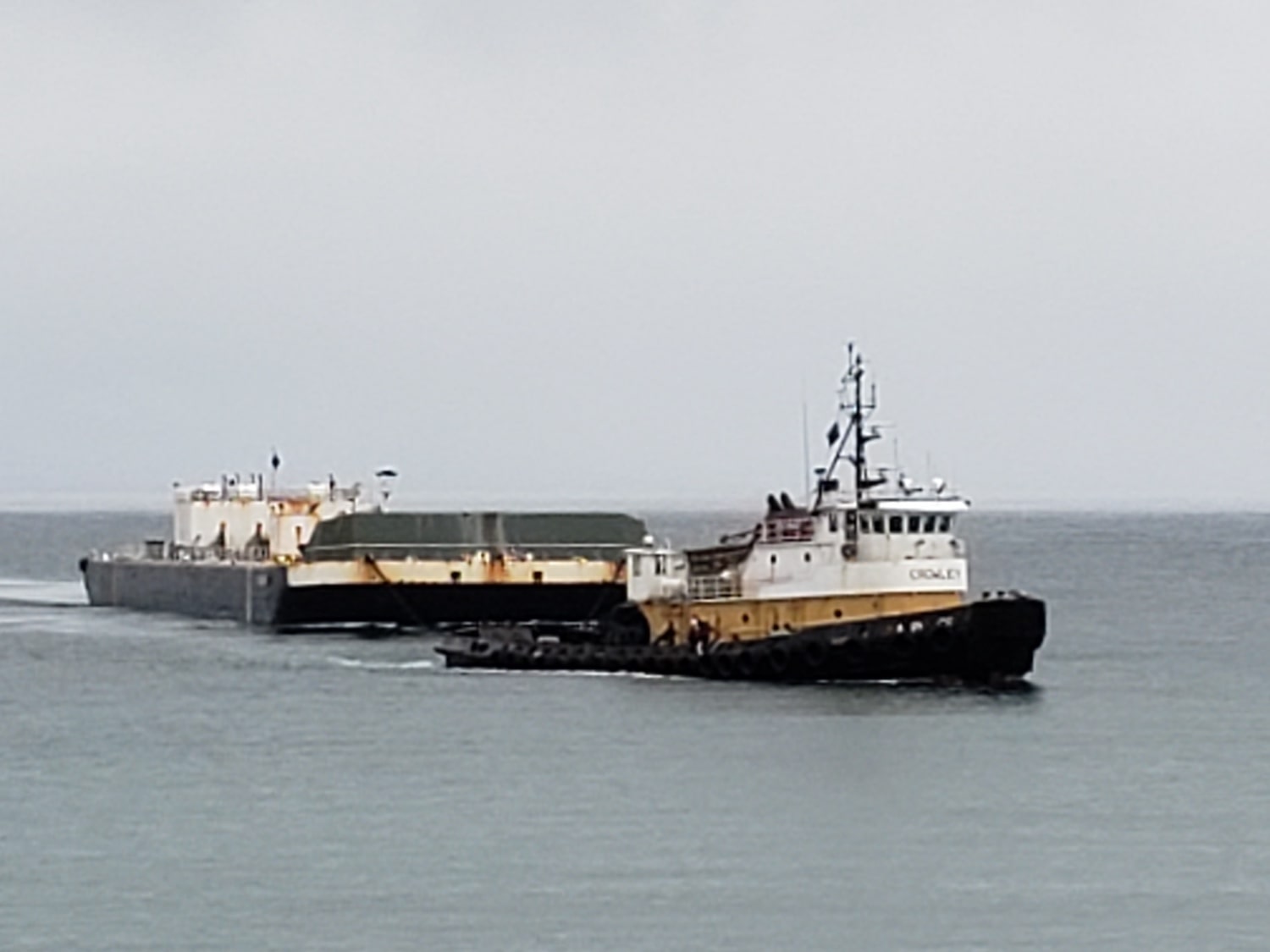
Offshore Ship-to-Shore
Lightering operations to this island 1,200 miles from Anchorage are challenged by the “tyranny of distance,” converging at a location where tide and wave action, combined with drastic and sudden weather changes, create narrow windows of opportunity for marine operations. After coordinating government, contractor and Crowley personnel for the most appropriate operational timing, Crowley successfully lightered fuel from a contracted articulated tug-barge (ATB) offshore, then delivered it over the shore and into Eareckson’s shoreside tanks and trucks.
The operation, carried out in partnership between Crowley’s government solutions and Alaska fuels team, utilized the company-owned tug Sea Prince and 52,000-barrel barge DBL-289 to execute multiple vessel-to-vessel lighterages, followed by over the shore deliveries in lieu of a traditional alongside delivery.
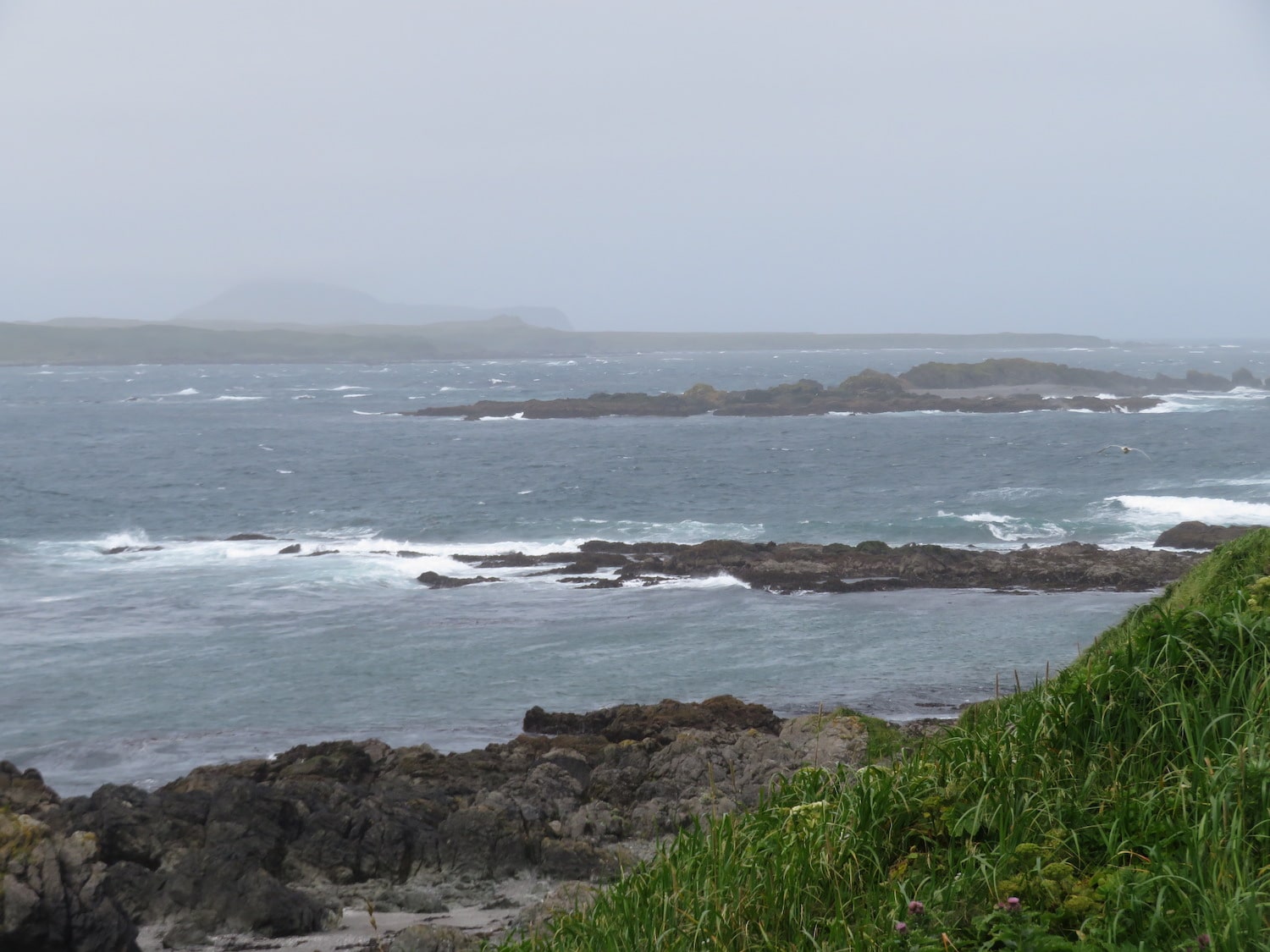
Waiting for Windows
In preparation for the delivery, the team staged 6 hours west of Shemya at the island of Attu. “All of the weather fronts come from the west and go east,” Morris explained. “If you base yourself west of the island before a front comes through, you’re following right behind it. So, when you get the chance to get in there, you get in and you get pumped.”
The crew looked for a 36-hour window to get pumped, but because of the uncertainty of the weather, the team made the most of the amount of time available to them. “We’re pretty good at looking at how long we have, and we’re not above stopping and starting a hundred times if that’s what it takes. Hopefully that’s not what it takes, but we’ll stop and start as many times as we have to in order to do it safely.”
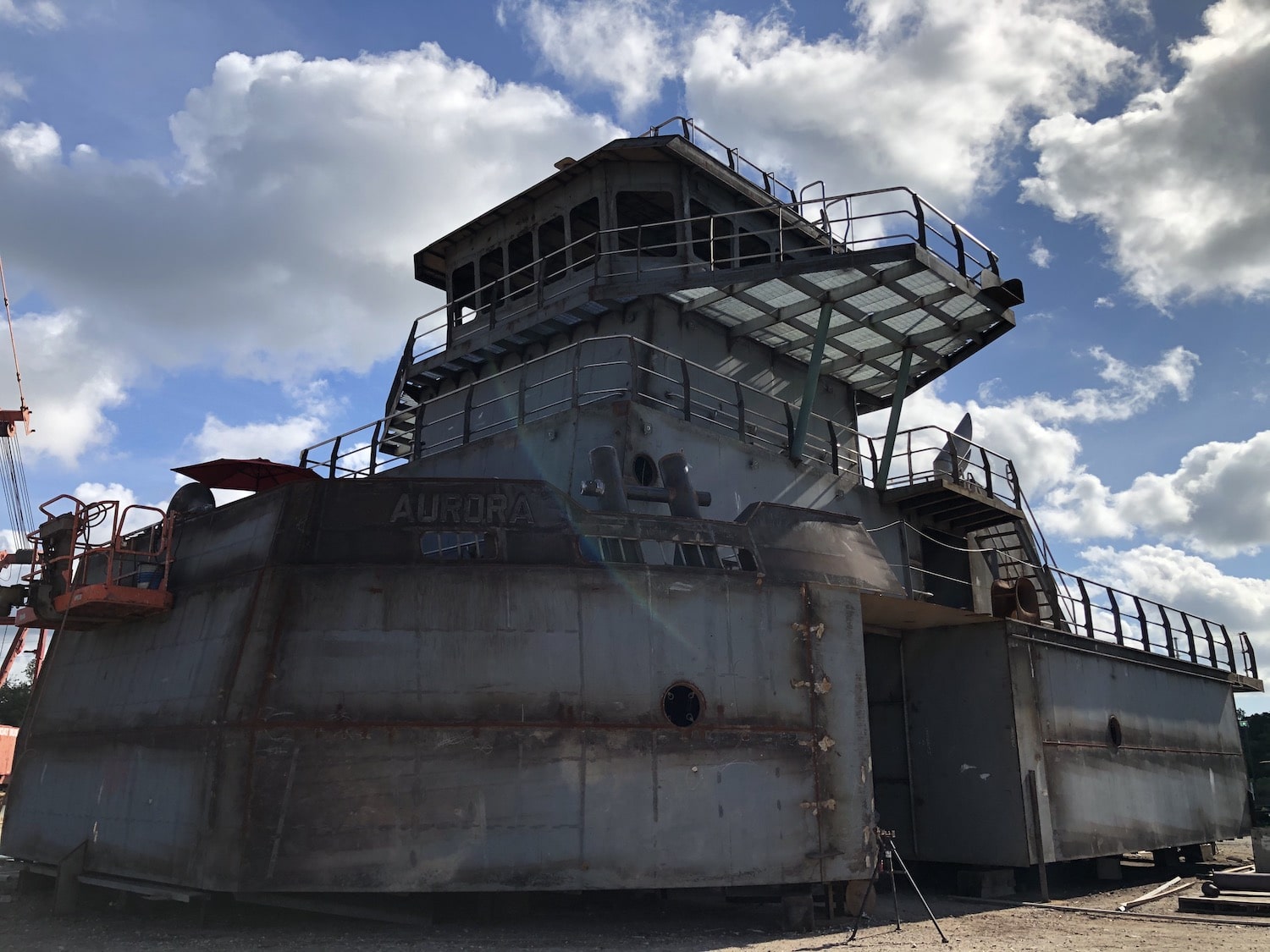
Next Year Things Will Be Different
Projects and military personnel come and go to Shemya and Western Alaska, but Crowley continues to invest steadily in its service to the region. Starting in January 2021, and subject to a new contract from the U.S. Government, fuel deliveries to Shemya will be a prime beneficiary of a new 55,000-barrel articulated tug barge (ATB) being deployed to serve the fuel needs of Shemya and other military stations and villages throughout the region.
With an ATB, the tug fits into a notch in the back of the barge. The two vessels are held fast together for better maneuverability. The design will enable the team to get in and out of Shemya more efficiently and provide a bigger window of opportunity.
Times Change, Crowley’s Commitment Doesn’t
Changes in Alaska are swift and severe. The capacity and flexibility of Crowley’s combined divisions deliver an incomparable array of services and everything from fuel and government solutions to a range of logistics and marine engineering capabilities.
What is true in Shemya is true anywhere in the world: Crowley remains a safe harbor and source of know-how for today’s toughest energy, maritime and logistics challenges.
Learn more about Crowley’s government solutions, fuel solutions and total supply chain solutions. Or reach out to a team member to hear how Crowley’s services can be adapted for your mission.